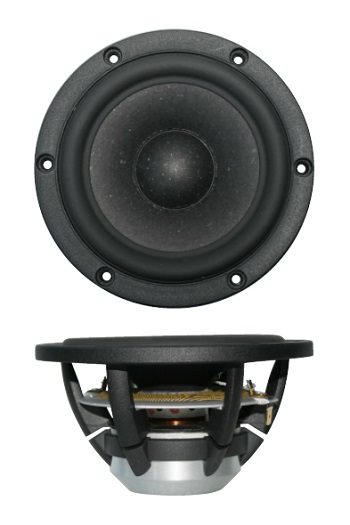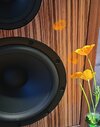Forward into the past! A departure from our signature sleek-modern form-follows-function look, into a well loved and accepted traditional format.
We're out to show that within the form factor shared by a few venerated British makers, and at least one domestic maker of high sensitivity designs, we can demonstrate the obvious superiority of next gen tech..
As an avid proponent of Next Gen, what could be more fun than appearing in sheep's clothing, going head-to-head, and destroying them with sheer performance?
Up to the minute, top-top shelf drivers coupled directly to Ncores in brutally well built enclosures, a certain level of filter design chops, plus Dirac Live room correction?
All along, I have paid little attention to this sector of the market, but it sure looks to me that most of what's going on is based on older generation drivers. The gist of marketing appeals seems to be that the designs have been refined over decades. Just me but: “refined over decades” pretty much means: maxed out long ago. Crimony, by the time you’re touting silver voice coils (on a 90s era midline driver), you’ve sadly gotten lost in the weeds. But apparently there are enough customers who are comfy enough on that garden path to perpetuate a technology that, frankly, is not capable of transducing HD Audio.
This will not be a contest. Not on any count. Not on performance. And certainly not on value.
Last metaphor: the one about the applecart.
Here, I'll get into the fine details about how Harrier does what she does. First, the drawing that got things going. Some of the stuff that's coming is redundant upon the SHOP PICS thread, but it all wants to be together.

We're out to show that within the form factor shared by a few venerated British makers, and at least one domestic maker of high sensitivity designs, we can demonstrate the obvious superiority of next gen tech..
As an avid proponent of Next Gen, what could be more fun than appearing in sheep's clothing, going head-to-head, and destroying them with sheer performance?
Up to the minute, top-top shelf drivers coupled directly to Ncores in brutally well built enclosures, a certain level of filter design chops, plus Dirac Live room correction?
All along, I have paid little attention to this sector of the market, but it sure looks to me that most of what's going on is based on older generation drivers. The gist of marketing appeals seems to be that the designs have been refined over decades. Just me but: “refined over decades” pretty much means: maxed out long ago. Crimony, by the time you’re touting silver voice coils (on a 90s era midline driver), you’ve sadly gotten lost in the weeds. But apparently there are enough customers who are comfy enough on that garden path to perpetuate a technology that, frankly, is not capable of transducing HD Audio.
This will not be a contest. Not on any count. Not on performance. And certainly not on value.
Last metaphor: the one about the applecart.
Here, I'll get into the fine details about how Harrier does what she does. First, the drawing that got things going. Some of the stuff that's coming is redundant upon the SHOP PICS thread, but it all wants to be together.























